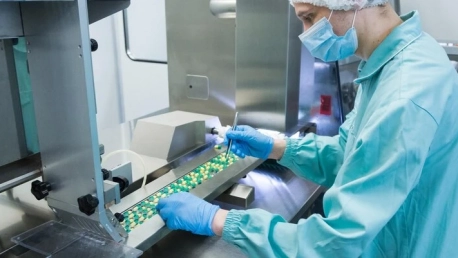“`The biopharmaceutical industry is navigating through a phase of spectacular growth, primed to achieve a market valuation of USD 60.3 billion by 2033. This escalation is fuelled by a surge in demand for biopharmaceutical products and the increasingly significant role of Contract Manufacturing Organizations (CMOs) and Contract Research Organizations (CROs) in meeting this demand. These organizations have become central to the industry’s expansion, providing critical services that enhance the development, production, and distribution of biopharmaceutical products.
Market Expansion Driven by Outsourcing
The Rise of Biopharmaceutical Outsourcing
In the realm of biopharmaceuticals, the trend of outsourcing to CMOs and CROs is intensifying. The intricate processes required to manufacture and research biopharmaceutical products demand not only specialized expertise but also state-of-the-art technology—resources that are often found within these outsourced organizations. Companies are, thus, forming strategic alliances with CMOs and CROs to both streamline and enhance their product pipelines while managing costs and focusing on their core competencies.
Services Offered by CMOs and CROs
CMOs are playing a pivotal role by extending their offerings beyond just manufacturing. These organizations are engaged in the entire value chain, from process development and bioproduction—be it upstream or downstream processing—to fill and finish operations. They also handle analytical and quality control studies, which ensure the safety and efficacy of biopharmaceutical products. On the other hand, CROs hone in on contract research, dedicating their efforts to specialized research areas including oncology and neuroscience. Their tailored services aid in accelerating the drug development process, facilitating the journey from concept to market.
Product Development and Sources
Significance of Mammalian Sources
Mammalian cell lines have become the cornerstone of biopharmaceutical development, mainly due to their capacity for complex post-translational modifications that result in proteins with human-like structures. These cell lines are particularly vital for producing therapeutics that are akin to those naturally occurring in the human body, offering improved safety and efficacy. As biopharmaceutical companies strive to tackle more intricate biological targets, the reliance on mammalian sources is only expected to intensify, marking a significant stride in the industry.
Biologics and Biosimilars: A Synopsis
The biopharmaceutical marketplace is abundant with a diverse suite of biologics, including monoclonal antibodies, recombinant proteins, and vaccines. Biosimilars, essentially generic versions of biologics, are carving out their own niche on account of being more cost-effective. This segment is swiftly gaining momentum as patents for original biologics expire, opening the door for these alternatives. These biosimilars not only foster competition but also encourage innovation as companies seek to differentiate their products and capture market share.
Regional Analyses and Strategies
North America and Europe: Market Leaders
North America and Europe have long been regarded as leaders in the biopharmaceutical sector, buoyed by their robust infrastructure, substantial investments in research and development, and conducive regulatory environments. This supremacy in the market is sustained by an ever-growing pipeline of biopharmaceutical products and a heightened focus on personalized medicine, a field in which both regions have made great headway. The established presence of major biopharmaceutical firms in these markets further secures their commanding position.
Asia-Pacific and Emerging Markets: The Growth Frontier
The Asia-Pacific region, alongside other emerging markets, is poised to become a significant player in the biopharmaceutical scene. As healthcare systems evolve and spending on biologics increases, these regions offer untapped opportunities but also present unique challenges. Market players need to navigate diverse regulatory landscapes, forge local partnerships, and adapt their operations to be competitive. With the right strategic approach, companies can leverage the immense growth potential offered by these burgeoning markets.
Competitive Landscape and Industry Innovations
Key Industry Players
In a bid to stay ahead of the curve, key industry players such as Boehringer Ingelheim, Rentschler Biopharma, and Samsung Biologics are constantly evolving. These giants are investing heavily in R&D and establishing strategic collaborations to widen their competencies and global reach. Furthermore, they actively engage in mergers and acquisitions to diversify their portfolios and strengthen their market presence. Their sustained efforts in innovation ensure they remain at the forefront of a competitive and dynamic market.
Innovation as a Growth Catalyst
Against the backdrop of a competitive and fast-paced biopharmaceutical industry, innovation serves as an indispensable growth catalyst. Companies are in an unending race to unveil groundbreaking products and technologies that redefine treatment paradigms. Those who succeed in this innovation-driven environment are set to reap considerable rewards, both in terms of financial gain and in solidifying their positions as industry leaders. As such, the industry’s future hinges significantly on the balance between innovation, strategic partnerships, and a profound understanding of market needs.“`









